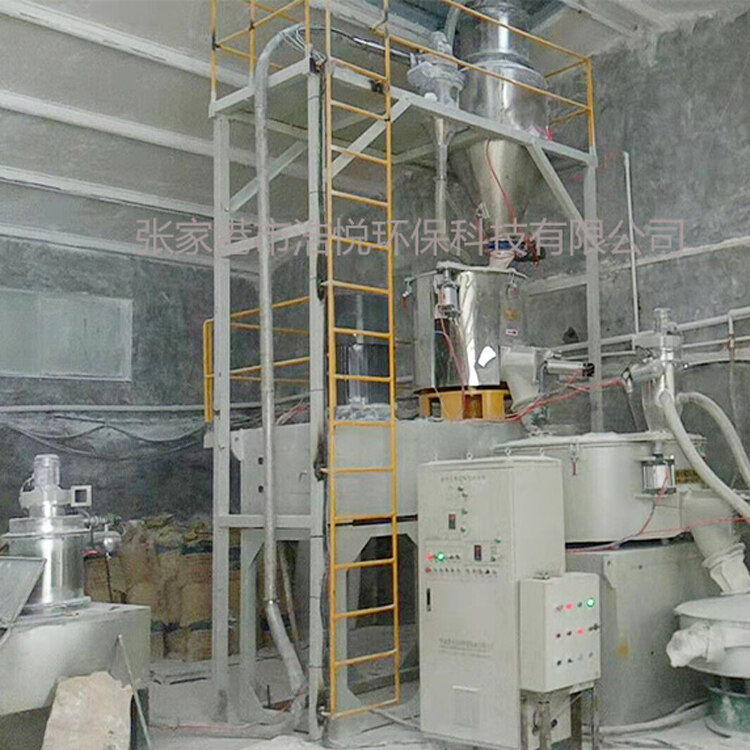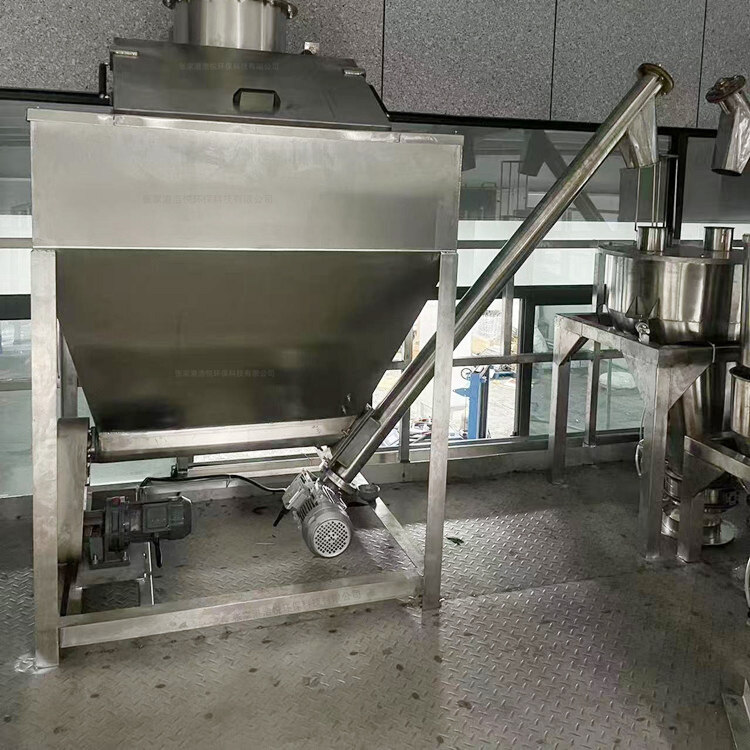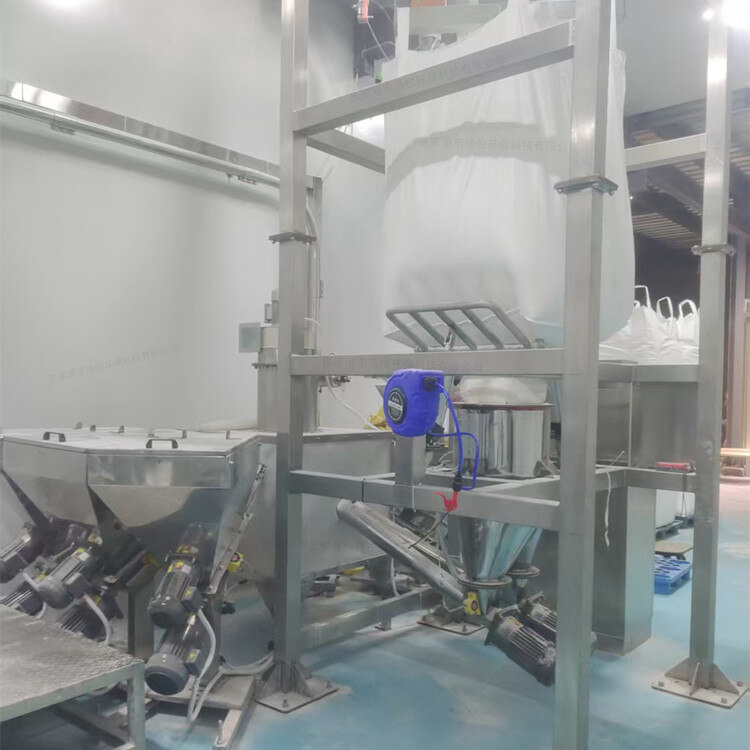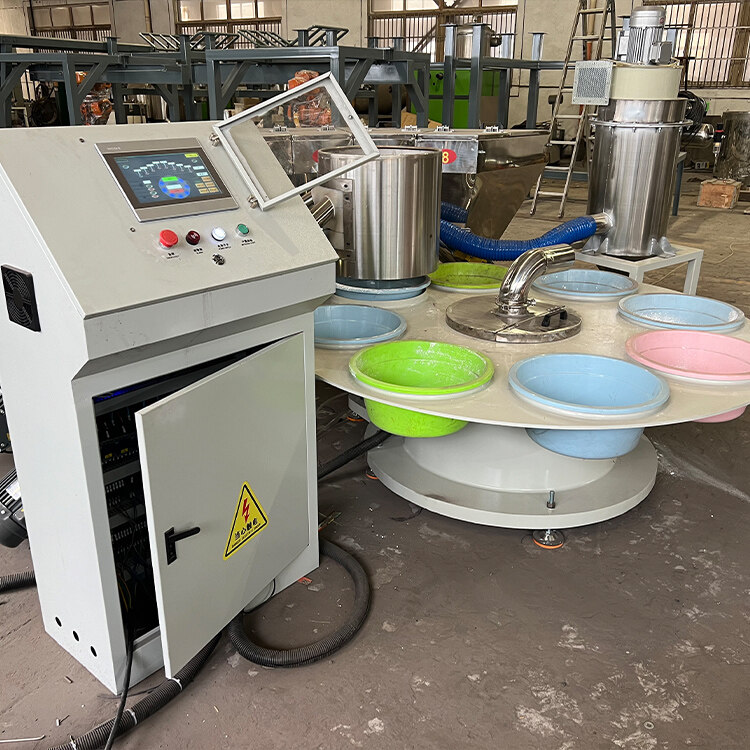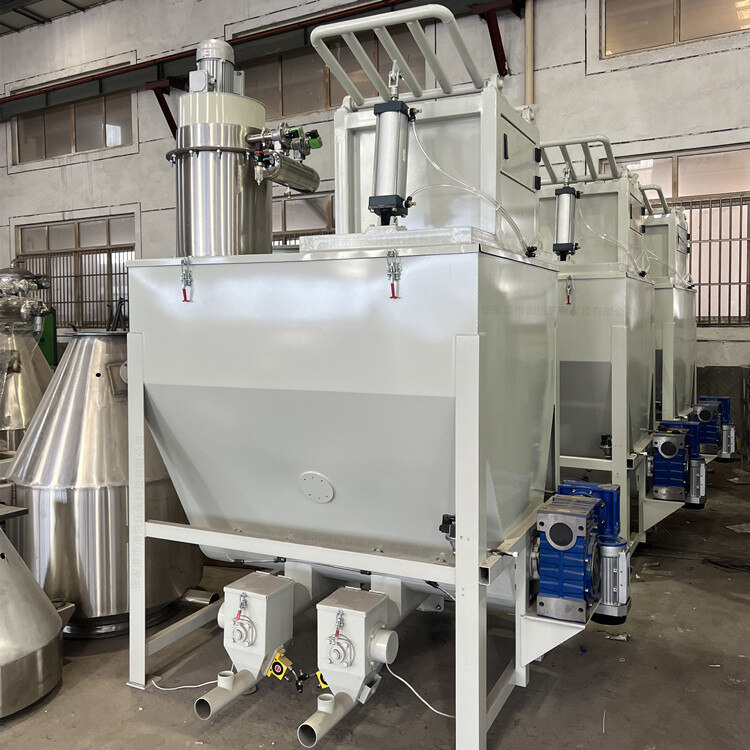- Introduction to automatic batching machine and fully automatic batching machine equipment
- The powder metering system tells you about the introduction of the mixing and drying machine
- 1000kg vacuum feeding machine
- Fully automatic small material batching system
- Research on Innovation of Automatic Weighing Machine Technology
- Design and operation of automatic batching system using PLC, industrial computer and frequency converter
Automatic conveying system
- Category:Automatic metering and conveying equipment
- Hits:167次
- Release Date:2025-06-30
- Share:
- Inquiry
- Details
In the context of the rapid development of Industry 4.0 and intelligent manufacturing, automatic conveying systems have become an indispensable and important component of modern industrial production. It achieves efficient and continuous transportation of materials from one place to another through automation technology, greatly improving production efficiency, reducing labor costs, and ensuring the stability and reliability of the production process. From assembly line operations in food processing workshops, to precision transportation in electronic product manufacturing, to intelligent sorting in logistics and warehousing, automatic conveying systems play a critical role in various fields. The following will provide a comprehensive introduction to the automatic conveying system from the aspects of system composition, working principle, classification, application scenarios, and development trends.
1、 Composition architecture of automatic conveying system
The automatic conveying system mainly consists of five parts: conveying equipment, driving device, support structure, control system, and auxiliary device. Each part cooperates and forms a complete automated material conveying system.
(1) Conveyor equipment
The conveying equipment is the core part of the automatic conveying system, with various types depending on the characteristics of the material and the conveying requirements. Common types include belt conveyors, chain plate conveyors, screw conveyors, roller conveyors, pneumatic conveyors, suspension conveyors, etc. Belt conveyors carry and transport materials through continuously moving belts, suitable for granular, block, and bulk materials; Chain plate conveyor uses the movement of chain plates to transport heavy or high-temperature materials; Spiral conveyors use the rotation of spiral blades to push materials forward, commonly used for conveying powdered materials; Roller conveyors rely on the rotation of rollers to transport goods and are widely used in logistics, warehousing, and packaging industries.
(2) Drive device
The driving device provides power for the conveying equipment, ensuring that materials can be continuously and stably transported. It is generally composed of components such as motors, reducers, couplings, etc. As a power source, choose a motor with appropriate power and speed according to the load and operating speed requirements of the conveying equipment; Reducer is used to reduce motor speed and increase torque to meet the actual needs of conveying equipment; Couplings connect the transmission components of motors and conveying equipment, transmitting power and compensating for certain installation errors.
(3) Supporting structure
The supporting structure is used to fix and support the conveying equipment, ensuring its stability and safety during operation. It includes components such as racks, brackets, and bases, usually made of steel structures or aluminum alloy materials. The rack is the main frame of the conveying equipment, which bears the weight of materials and the conveying equipment itself; The bracket is used to support conveyor belts, chain plates and other conveying components, ensuring that they remain in the correct position during operation; The base fixes the entire conveying system to the ground or other basic structures.
(4) Control system
The control system is the "brain" of the automatic conveying system, with PLC (programmable logic controller), industrial computer or dedicated controller as the core, matched with human-machine interface (HMI). The operator sets parameters such as conveying speed, start stop time, and operating mode through HMI, and the control system controls the operation of the driving device according to the preset program. At the same time, it monitors the operating status of the conveying equipment in real time, such as speed, current, temperature, etc. Once an abnormal situation occurs, such as material blockage, equipment overload, belt deviation, etc., the control system immediately sends an alarm signal and automatically takes corresponding protective measures, such as stopping, decelerating, or starting backup equipment.
(5) Auxiliary device
Auxiliary devices are used to improve the performance and reliability of automatic conveying systems, including tensioning devices, cleaning devices, correction devices, detection devices, etc. The tensioning device is used to adjust the tension of the conveyor belt or chain to ensure its normal operation; The cleaning device can remove residual materials on the conveyor belt, preventing material accumulation from affecting the conveying effect; The correction device can automatically detect and correct the deviation of the conveyor belt, ensuring the accuracy of the conveyor; Detection devices such as photoelectric sensors, proximity sensors, etc. are used to detect the position, quantity, and conveying status of materials, providing feedback information for the control system.
2、 Working principle
The working principle of the automatic conveying system is based on power drive and mechanical transmission. After the motor in the driving device is powered on, it generates rotational power, which is reduced in speed and increased in torque through a reducer, and then transmitted to the transmission components of the conveying equipment, such as the drum of the belt conveyor and the sprocket of the chain plate conveyor, through a coupling. The transmission components drive the movement of the conveying medium (such as belts, chain plates, rollers, etc.) to achieve material conveying.
The control system plays a crucial role in the transportation process. It collects real-time operational data of the conveying equipment through sensors and compares it with preset parameters. When abnormalities are detected, such as deviation of conveying speed from the set value, material blockage, etc., the control system will immediately adjust the operating parameters of the driving device or issue control instructions to start the corresponding auxiliary device for processing. For example, when the photoelectric sensor detects excessive material accumulation on the conveyor belt, the control system will automatically reduce the conveying speed or pause the equipment operation, and at the same time activate the alarm device to notify the operator to take action.
3、 Classification and Characteristics of Automatic Conveyor Systems
(1) Classified by transportation method
Continuous conveying systems, such as belt conveyors, chain plate conveyors, etc., are capable of continuously conveying materials and have the characteristics of large conveying capacity and high efficiency. They are suitable for long-distance conveying of materials in large-scale production scenarios.
Intermittent conveying system: such as bucket elevators, vibrating conveyors, etc., the conveying of materials is carried out in an intermittent manner, commonly used in situations where precise control of material conveying volume or material transfer between different workstations is required.
(2) Classified by conveying medium
Mechanical conveying system: Using mechanical components such as belts, chains, and rollers as conveying media, it has a simple structure, easy maintenance, and is widely used.
Pneumatic conveying system: using the flow of air to transport powdered and granular materials, it has the advantages of closed conveying process, no pollution, and long-distance conveying. It is commonly used in industries such as chemical, food, and pharmaceutical.
Hydraulic conveying system: Transporting materials through liquid media (such as water, oil, etc.), suitable for conveying materials with certain fluidity, such as slurry, mud, etc.
4、 Application scenarios
(1) Food and beverage industry
On food and beverage production lines, automatic conveying systems are used for the transportation of raw materials, material transfer during processing, and packaging and sorting of finished products. For example, in biscuit production, the entire process from the transportation of raw materials such as flour and sugar, to biscuit forming, baking, cooling, packaging, and palletizing, relies on the efficient operation of automatic conveying systems to ensure the hygiene and efficiency of food production.
(2) Electronic manufacturing industry
Electronic manufacturing requires extremely high precision and cleanliness in material transportation. Automatic conveying systems such as precision belt conveyors and vacuum adsorption conveyors are used for the transportation and assembly of electronic components. They can accurately transport small electronic components to designated locations while avoiding material contamination and ensuring the quality of electronic products.
(3) Logistics and warehousing industry
In logistics centers and warehouses, automatic conveying systems are combined with automated sorting equipment to achieve rapid sorting, handling, and storage of goods. For example, through the collaborative work of roller conveyors and sorting robots, goods can be automatically sorted to different conveyor channels based on their destination information, greatly improving the efficiency and accuracy of logistics operations.
(4) Other industries
Automatic conveying systems also play an important role in industries such as automobile manufacturing, building materials production, and pharmaceuticals and chemicals. The transportation of components on automobile production lines, the transportation of raw materials such as sand and cement in the building materials industry, and the transportation of powdered and liquid raw materials in the chemical industry all rely on automatic conveying systems to achieve efficient production.
5、 Development Trends
In the future, automatic conveying systems will develop towards intelligence, flexibility, energy conservation, and greening. In terms of intelligence, with the help of technologies such as artificial intelligence and the Internet of Things, remote monitoring, fault prediction, and automatic optimization of equipment can be achieved; Flexibility is reflected in the ability to quickly adapt to changes in different products and production processes, meeting the needs of multi variety and small batch production through modular design and reconfigurable system architecture; Energy conservation requires the use of efficient and energy-saving driving devices and optimized transmission schemes to reduce energy consumption; Greening emphasizes reducing pollution such as dust and noise during transportation, adopting environmentally friendly materials and clean production technologies, and promoting sustainable development of the industry.


